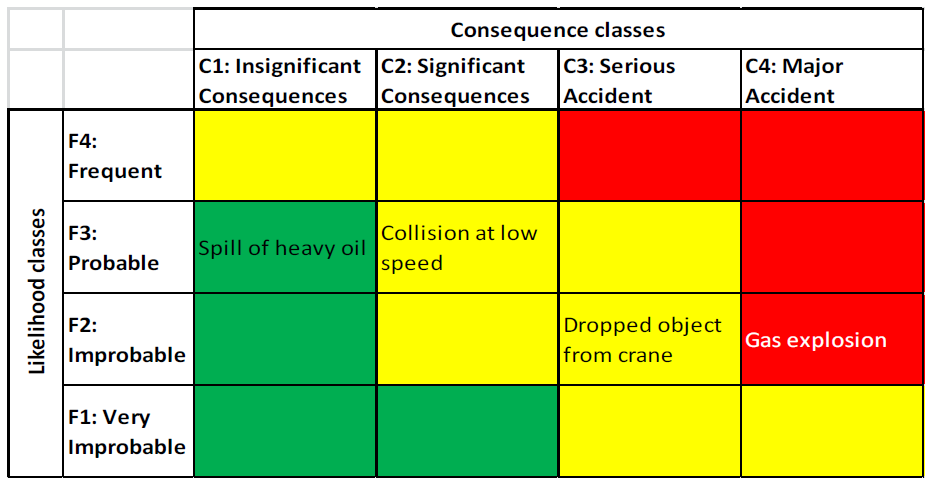Risk matrix
(→Application) |
(→Application) |
||
| Line 21: | Line 21: | ||
Given these interpretations, there is no need to further prioritize hazards, at least not in the red and green areas. | Given these interpretations, there is no need to further prioritize hazards, at least not in the red and green areas. | ||
| − | [[File:riskmatrice.jpg.png]] | + | [[File:riskmatrice.jpg.png]][[File:Example.jpg]] |
In cases where the risk matrix is used for prioritizing (which hazards require most attention in order to reduce the cumulative risk), a larger number of risk levels may be necessary in order to obtain sufficient resolution to rank events or hazards in order of priority. Even then, different hazards may end up either in the same cell or with the same assigned risk (so called risk ties, see (Ni et al., 2010). | In cases where the risk matrix is used for prioritizing (which hazards require most attention in order to reduce the cumulative risk), a larger number of risk levels may be necessary in order to obtain sufficient resolution to rank events or hazards in order of priority. Even then, different hazards may end up either in the same cell or with the same assigned risk (so called risk ties, see (Ni et al., 2010). | ||
Revision as of 09:01, 13 September 2016
Abstract:
Risk Matrix , also popularly known as the Probability and Impact Matrix, is a tool used during Risk Assessment to define the various levels of risk as the product of the harm probability categories and harm severity categories.
It is a very effective tool that could be used successfully with Project Management to increase awareness and visibility of risks and hence assist management decision making.
Contents |
Big idea
Application
Risk matrices have two main applications. The application or aim of the risk matrix is relevant when discussing the suitability of risk matrices. One application is decision-making about the acceptance of risk; the other is to prioritize which risk needs to be addressed first.
Frequently, in risk acceptance, only three levels of risk are distinguished:
- hazards or events with unacceptable risk (often indicated with a red color); - hazards or events in which the risk is found to be ‘‘broadly acceptable’’, i.e. not requiring further risk reduction (often indicated with green), - an intermediate level, where risk should be reduced ‘‘As Low As Reasonably Practicable’’ (ALARP, often indicated with yellow).
Given these interpretations, there is no need to further prioritize hazards, at least not in the red and green areas.
In cases where the risk matrix is used for prioritizing (which hazards require most attention in order to reduce the cumulative risk), a larger number of risk levels may be necessary in order to obtain sufficient resolution to rank events or hazards in order of priority. Even then, different hazards may end up either in the same cell or with the same assigned risk (so called risk ties, see (Ni et al., 2010).

